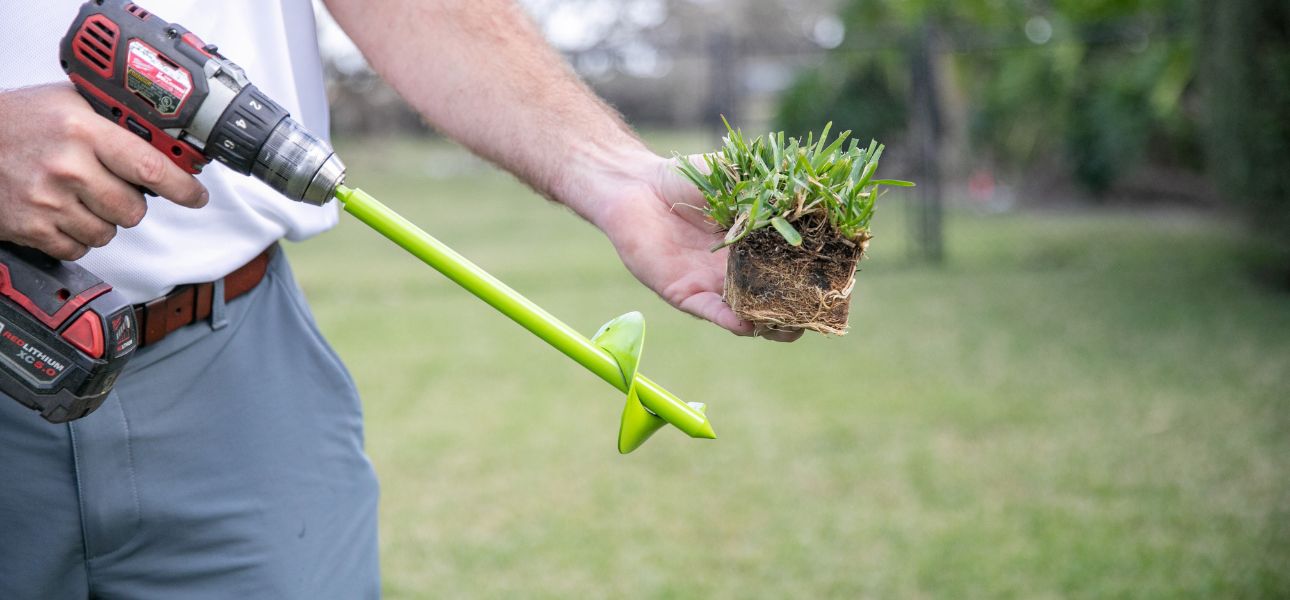What Does Grass Do For the Environment?

Grass is everywhere—on lawns, golf courses, athletic fields, roadside, and even driveway cracks.
While admiring your lush, green lawn, your initial thoughts probably revolve around its aesthetics, how it increases property values, or perhaps the chore of mowing. However, beyond these surface-level qualities, natural grass offers a wealth of benefits that extend far beyond your landscape. Ongoing research continually reveals additional health and environmental advantages of natural grass.
10 Health and Environmental Benefits of a Healthy Lawn
Lawns, whether established from seed, grass plugs, or sod, offer a multitude of benefits: Grass improves air quality, reduces heat, absorbs carbon dioxide, and prevents soil erosion, among other advantages. It also filters and restores groundwater resources and aids in reducing urban flooding. Ultimately, lawns provide a safe space for recreation and sports.
Continue reading for a detailed rundown of the benefits of grass.
It removes carbon dioxide.
Grass, like any other plant, is a living organism that undergoes photosynthesis, absorbing carbon dioxide and converting it into energy. A healthy, average-sized lawn can absorb up to 300 pounds of carbon annually, while a golf course fairway can take in as much as 1,500 pounds per year. As a result of this metabolic process, grass releases oxygen into the atmosphere. Surprisingly, a 5,000-square-foot grass lawn can generate enough oxygen for 14-34 people daily.
It filters pollutants in the air.
Another way grass contributes to air quality is by actively filtering out pollutants such as dust and dirt. It is estimated to trap about 12 million tons of these particles that would otherwise be released into the atmosphere, creating a cleaner and healthier environment.
It improves water quality.
In addition to trapping particles released into the air, a thick and healthy lawn, with its fibrous root system, can filter pollutants such as sediment from water runoff. It keeps these pollutants from leaching through the soil and into sewer systems, thus releasing cleaner water into our water reserves.

It lessens flooding.
With its dense network of roots, grass provides excellent water filtration, runoff control, and flood control. It can absorb six times more rainfall than a wheat field and four times more than a hay field. Specifically, an average-sized soccer field can absorb up to 50,000 gallons of water before runoff occurs.
It prevents soil erosion.
By binding soil particles together, grass has also been proven to reduce erosion significantly, up to 6-18 times more than bare soil. Additionally, it redirects the flow of water, slowing it down and further reducing the risks of soil erosion. This ability also helps maintain soil health and structure.
It has a natural cooling effect.
Green plants, such as turfgrass, act as natural air conditioners through evapotranspiration. This process helps cool lawns—up to 60 degrees cooler than surrounding concrete surfaces and 14 degrees cooler than bare soil. This highlights the significant cooling effect of green spaces, particularly in urban areas. Whereas an average air conditioner has a three to four-ton cooling capacity, an average lawn has a cooling effect of about nine tons of air conditioning.

It conserves energy.
Because of its natural cooling effect, urban and rural lawns reduce the amount of energy required to cool nearby buildings. It helps lower ambient temperatures around structures, reducing the workload on air conditioning systems. As a result, less energy is consumed to maintain comfortable indoor temperatures, leading to energy conservation and cost savings.
It helps reduce noise pollution.
Unlike concrete surfaces that bounce off sound, grass has natural sound-absorbing properties. It acts like a blanket or an insulation panel, absorbing sounds from the surroundings. By reducing noise pollution, lawns create a more peaceful environment, which is beneficial for humans and animals.
It improves wellness and reduces stress.
Green spaces have long been linked to promoting wellness and reducing stress. Views of lawns and nature can lower blood pressure, relieve muscle tension, improve attention, and reduce feelings of fear, anger, or aggression. In office settings, views of landscaped areas led to increased job satisfaction, higher productivity, and reduced work pressure.
It supports recreation and sports.
Turfgrass is extensively used for recreation and sports, providing a positive and safe outdoor space for activities. It encourages physical activity, which is crucial for combating various diseases, particularly obesity.

Takeaway
Aesthetic-wise, a well-maintained lawn can significantly increase property values by an estimated 10-15 percent. But, to maximize these benefits, the key is to establish and maintain a healthy lawn.
Despite misconceptions about grass being unsustainable and requiring excessive upkeep and watering, these benefits far outweigh the potential downsides of having green landscapes. It's particularly true when you can make conscious efforts to reduce your carbon footprint. One way is by establishing a lawn from grass plugs, which require less water than seed to adapt and grow in their new environment.
For grass plugs and more lawn care tips, visit the Try SodPods® website today.

